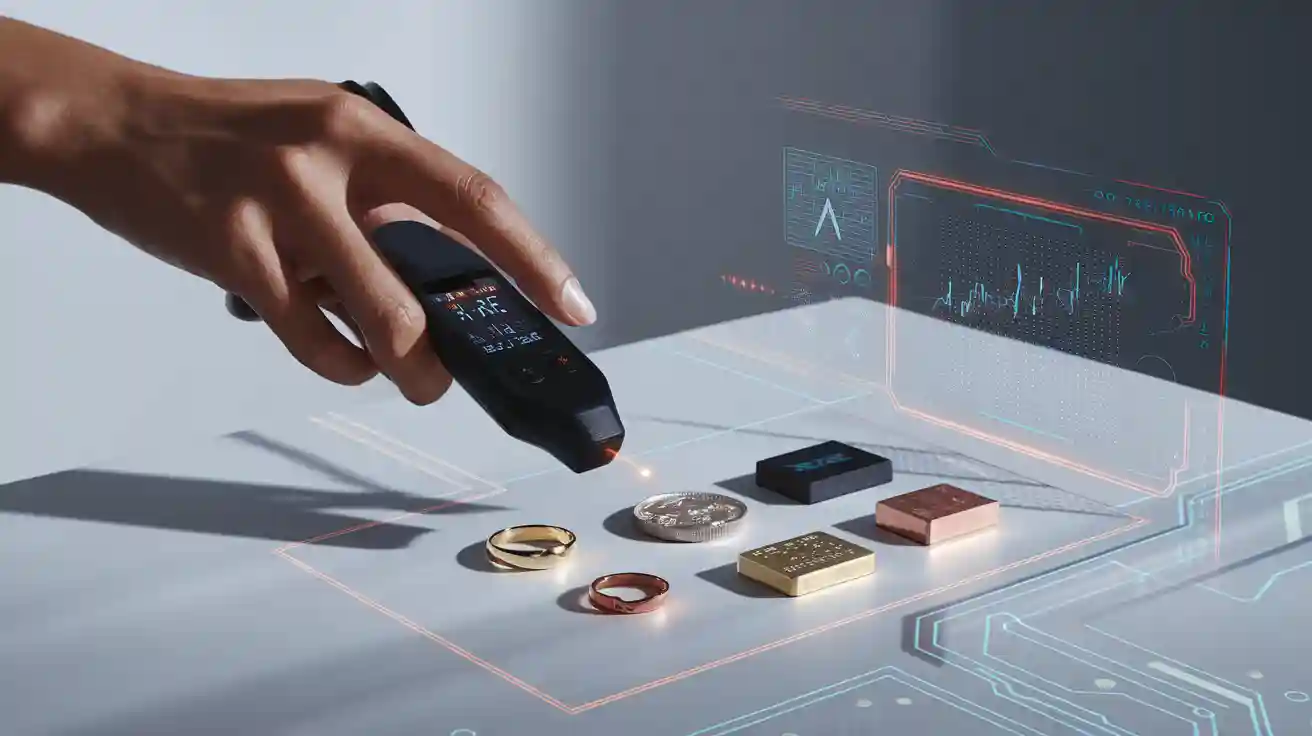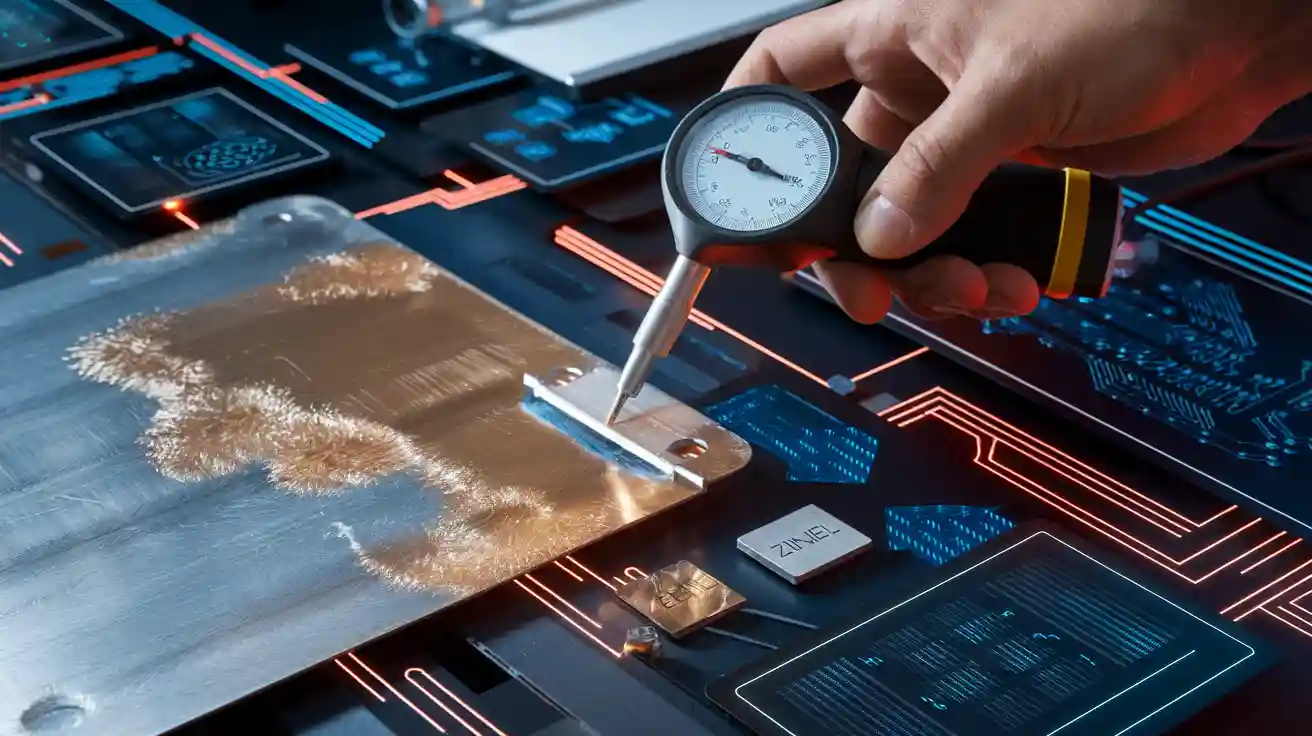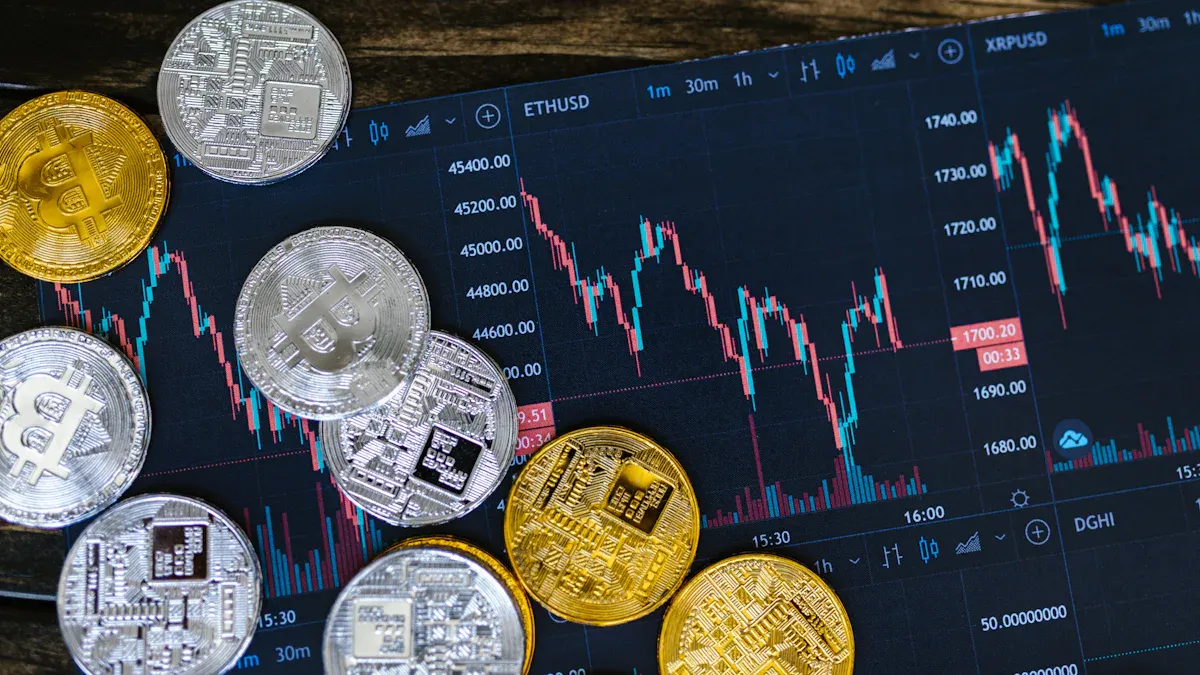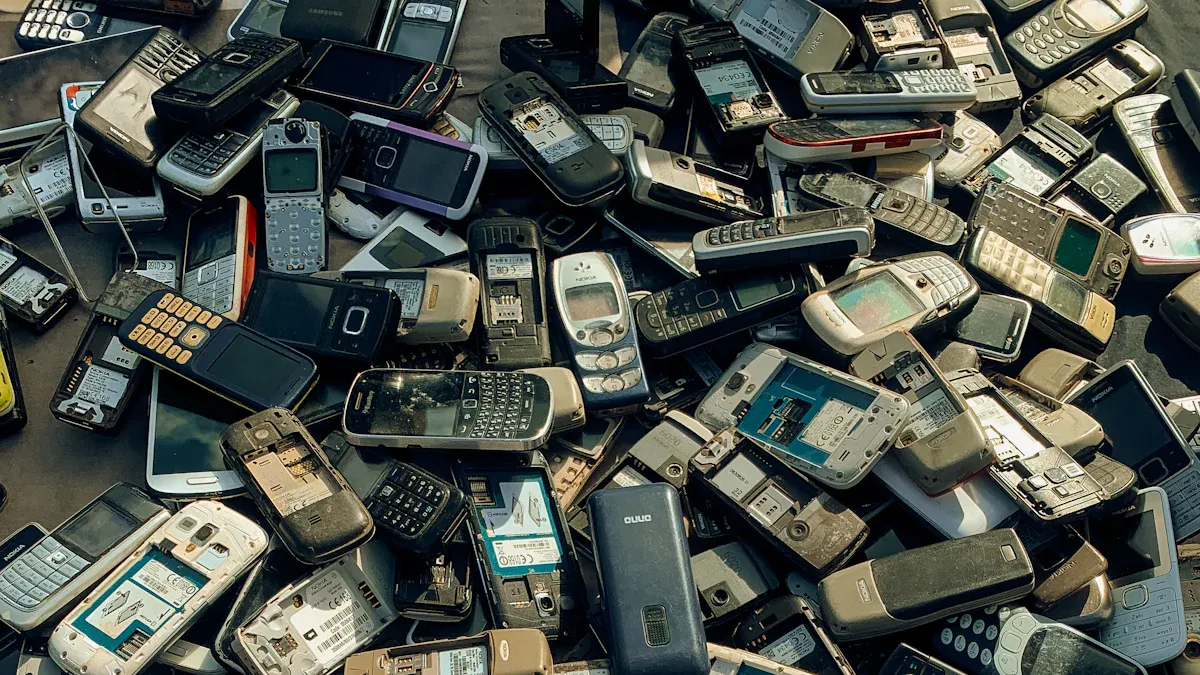
You may think an XRF gold tester only checks gold, but it does more. These devices use special technology to look at many metals and elements in seconds. They do not damage your sample. For example, a portable XRF qızıl tester can find gold, silver, platinum, and other metals right away. This technology helps many industries, as you can see in the table below:
Industry/Application | Use Case Description |
|---|---|
Mining | Elemental analysis of rocks, ores, and minerals |
Metal and Alloy Analysis | Quality control of alloys |
Environmental Analysis | Checking soil, water, and sediments for contaminants |
Pharmaceutical Industry | Detecting impurities in drug materials |
Materials Science | Characterizing and controlling material quality |
Food and Drinks Sector | Ensuring food safety |
Forensic Science | Analyzing trace elements at crime scenes |
Consumer Goods Sector | Testing jewelry, toys, and textiles |
Açar Takeaways
XRF gold testers can find many metals like gold, silver, platinum, and copper. They do this fast and do not hurt your things. These testers give quick and correct results. This helps you make good choices in jewelry, mining, and recycling. XRF testing is safe and does not damage items. You can test valuable or breakable things without worry. XRF testers work best on clean and flat surfaces. They need to be checked often to give good results. XRF is faster and safer than acid or fire assay tests. It can also test for more than one metal at a time.
XRF Gold Tester Capabilities
What is XRF
You might wonder how an XRF gold tester works. XRF means X-ray fluorescence. This technology uses X-rays to look at atoms in things. When you use an XRF gold tester, it sends X-rays into the sample. The X-rays knock out some electrons inside the atoms. Then, other electrons move down to fill the empty spots. This makes energy come out as fluorescent X-rays. Each element gives off its own special X-ray energy, like a fingerprint.
XRF analysis helps you find and measure each element in your sample. If there is more of an element, the signal is stronger. You get results in seconds, and you do not have to damage the sample.
Scientists have shown that XRF can find elements from sodium to uranium. It can detect a lot or just a tiny bit, even a few parts per million. How well it works depends on the element and the detector. New XRF gold testers use better detectors and software for faster and more accurate results. You can trust them for quick checks or careful tests.
Metals Detected
An XRF gold tester can check many metals, not just gold. You can use it to find precious and common metals in jewelry, coins, and other things. Here are some metals you can find:
Gold (Au)
Silver (Ag)
Platinum (Pt)
Palladium (Pd)
Copper (Cu)
Nickel (Ni)
Zinc (Zn)
Tin (Sn)
Lead (Pb)
Iron (Fe)
You can also find other elements, like cadmium, rhodium, and tungsten, depending on the tester and settings. The table below shows some metals XRF gold testers check and their usual detection limits:
Metal | Typical Detection Limit (ppm) | Common Uses |
|---|---|---|
Gold (Au) | 1–10 | Jewelry, coins, electronics |
Silver (Ag) | 1–10 | Jewelry, coins, alloys |
Copper (Cu) | 1–10 | Alloys, coins, electronics |
Nickel (Ni) | 1–10 | Stainless steel, coins |
Zinc (Zn) | 1–10 | Brass, alloys |
Platinum (Pt) | 1–10 | Jewelry, catalytic converters |
Lead (Pb) | 1–10 | Solder, batteries |
XRF gold testers can quickly sort metals and alloys. For example, you can tell stainless steel grades apart by checking for nickel, chromium, and molybdenum.
XRF Gold Tester Limitations
You should know XRF gold testers have some limits. They cannot find elements with atomic numbers lower than sodium. This means they cannot find carbon, nitrogen, or oxygen. These elements do not give off strong enough X-ray signals for the tester to see.
XRF gold testers only check the surface or just under the surface. The X-rays go only a few millimeters deep. If your item has a thin gold layer over another metal, the tester may only show the gold on top. It may not show what is underneath unless the layer is very thin.
Some things can change the results. The shape, thickness, and roughness of the sample can affect the readings. Matrix effects, where one element changes another’s signal, can also cause mistakes. Advanced software helps fix these problems, but you should always use the tester the right way and calibrate it often.
Ucu: For the best results, make sure your sample is clean and flat. Calibrate and take care of your XRF gold tester often to get good readings every time.
XRF Gold Tester Advantages
Speed and Accuracy
You can trust an XRF gold tester to give you fast and accurate results. Many modern devices, like the Thermo Fisher XRF Spectrometer, deliver answers in just seconds. For example, the Vanta GX PIN XRF analyzer can test gold, silver, and copper in only 15 seconds. The results closely match certified reference standards, so you know you are getting reliable numbers. Some machines, such as the Maxsell XRF gold tester, let you choose how long to test. You can get up to 99.9% accuracy for gold purity. This speed and precision help you make quick decisions, whether you work in a jewelry store or a refinery.
Element | Test Results Range (%) | Average Result (%) | Certified Reference (%) | Test Time |
|---|---|---|---|---|
Gold (Au) | 33.38 – 33.50 | 33.42 | 33.33 | 15 seconds |
Silver (Ag) | 58.29 – 58.41 | 58.36 | 58.61 | 15 seconds |
Copper (Cu) | 8.17 – 8.32 | 8.23 | 8.06 | 15 seconds |
You save time and avoid mistakes by using XRF technology instead of slow, messy acid tests.
Non-Destructive Testing
When you use an XRF gold tester, you do not harm your sample. The device uses X-rays to check the metal, so you keep your jewelry, coins, or artifacts safe. Scientists call this method non-destructive because it does not change or damage what you test. You can even use it on rare or fragile items. Portable XRF tools let you test things in the field, like at a crime scene or in a mine, without taking samples apart.
XRF testing does not need chemicals or cutting.
You get results right away, with no waiting for lab work.
You can test the same item many times.
Industry Applications
You will find XRF gold testers in many industries. In jewelry stores, you can check gold purity and spot fake items without scratching or harming them. Refineries use XRF to test hundreds of gold bars each day, saving money and time. Mining companies use XRF to check ore samples on-site, which helps them get more gold from the ground. Recycling centers use XRF to sort metals quickly and safely. Around the world, countries like the USA, Germany, India, and Brazil use XRF gold testers to meet strict rules and keep customers happy.
XRF gold testers help you work faster, protect your valuables, and improve your business.
XRF vs. Other Testing Methods
Acid Testing
Acid testing is a common way to check gold. You scratch the item and drop acid on the mark. If the mark fades, the gold is not pure. This method is quick and simple, but it can damage your jewelry or coin. Acid testing does not tell you the exact gold content or the mix of other metals. It also uses strong chemicals that can be unsafe.
You can see the main differences in the table below:
Parameter | Acid Testing (AAS with Cyclotron Oscillation) | XRF Testing |
|---|---|---|
Leaching Rate (%) | N/A (non-destructive) | |
Detection Limits | 0.002 μg/mL (very sensitive) | Higher limits of detection |
Sample Preparation | Needs acid and scratching | Minimal, no damage |
Analysis Speed | Slower | Rapid |
Environmental Impact | Uses acids | Safe, no chemicals |
You get fast results with acid testing, but you risk harming your item and yourself. An XRF gold tester gives you a safer, non-destructive way to check gold and other metals, though it may not find very tiny amounts as well as acid testing with AAS.
Fire Assay
Fire assay is the gold standard for measuring gold. You melt the sample at high heat and separate the gold from other metals. This method is very accurate, but it destroys the sample and takes hours to finish. You need a lab and special tools.
XRF gold testers match fire assay results within 0.1% üçün 0.2% for large, flat pieces.
For small or odd shapes, XRF stays within 0.5% of fire assay.
XRF gives results in minutes, not hours.
You do not need to melt or cut your item.
XRF is safer because it does not use fire or chemicals.
You can trust fire assay for final checks, but you may prefer XRF for quick, safe, and repeatable tests.
Broader Analysis
An XRF gold tester does more than just check gold. You can use it to find many metals at once, like silver, platinum, and copper. It tells you the full mix of metals in your item. You do not need to guess or use many tests.
XRF gold testers keep your sample safe and whole.
You get fast, clear results with easy-to-read screens.
You can use them in stores, labs, or even in the field.
New models use smart software for better accuracy and data tracking.
XRF can spot gold plating and fake items, which acid and fire assay may miss.
Ucu: If you want a tool that checks many metals, keeps your items safe, and gives you results fast, an XRF gold tester is a smart choice.
You can count on XRF technology for quick and correct metal checks in many jobs. These testers work for gold, silver, and other metals too. Studies show XRF and lab tests give close results with good accuracy for different samples.
Results are usually steady, but small samples or low amounts can make results change more.
New things like AI and portable testers help more people use XRF around the world.
Market Trend | Details |
|---|---|
Growth Rate | |
Key Regions | Asia-Pacific, Africa, Latin America |
Main Applications | Jewelry, mining, retail |
XRF testers keep getting better, so they are a smart pick for anyone who needs fast and safe metal testing.
Faq
Can you use an XRF gold tester on jewelry with stones?
You can use an XRF gold tester on jewelry with stones. The tester only checks the metal it touches. Stones like diamonds or sapphires do not affect the metal reading. Make sure the tester touches a clean metal surface.
Is XRF testing safe for you and your items?
XRF testing is safe for you and your items. The X-rays used are low energy and stay inside the device. You do not need to worry about damage to your jewelry or coins. Always follow the safety tips in the user manual.
How accurate are XRF gold testers?
You get high accuracy with XRF gold testers. Most devices show gold purity within 0.01% üçün 0.5% of lab results. For best results, test flat, clean surfaces and calibrate your tester often.
Do you need to prepare your sample before using an XRF tester?
You should clean your sample before testing. Dirt or oils can change the results. Flat and smooth surfaces give the best readings. You do not need to cut or melt your item.







WhatsApp
Bizimlə WhatsApp chatına başlamaq üçün QR kodunu tarayın.